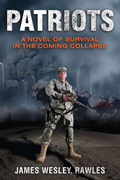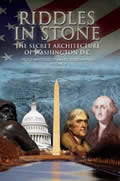By
Timothy N. Baldwin, JD.
February 11, 2016
NewsWithViews.com
As an introduction to my thoughts on Lavoy Finnicum's killing in Burns, Oregon, consider my article published in the Flathead Beacon's Two For Thought weekly Opinion section:
The FBI and Oregon police killed a rancher, Lavoy Finicum, last week. Savoy joined Ammon Bundy, among others, for three weeks in occupying a refuge on public lands in Burns. Like many Americans, the occupiers believed BLM had been long abusing power. Police released one video of the incident (but not other pertinent surveillance). Was this killing lawful?
Under the Fourth Amendment, police who use deadly force have a burden to prove their actions were objectively reasonable in light of the facts and circumstances confronting them based on the totality of the circumstances.
Regardless of one’s view of the occupation, the video raises issues regarding police’ actions: (1) Why block the highway in nowhere-ville? (2) Why use snipers and a dozen-plus officers? (3) Why not use spike strips to stop him? (4) When exactly was Lavoy likely to harm police?—when shot, Lavoy was facing no police, could barely walk in deep snow and held no gun. (5) Lavoy had not just committed a dangerous felony and fleeing therefrom. (6) Police had prior opportunities to serve an arrest warrant in a safe manner. (7) Why immediately rush Lavoy and spark conflict rather than contain the area and determine his actions?
The occupiers did not convince the greater part of society to aid them, given their seeming “state of war” approach. Still, if our laws can condemn Lavoy, they can also condemn police.
In fairness, there are some who are not normally forgiving to government abuse but believe police were justified in killing Lavoy: one such notable viewpoint on this incident is my dad, Chuck Baldwin. I, on the other hand, believe the video suggests that police were not justified in killing Lavoy when they did--even assuming he had a pistol inside his jacket and was reaching for it.
After Lavoy's death, his family was able to view his body. They released a press statement that they observed nine (9) bullet inserts in Lavoy's body. Police have yet to release autopsy records or comment on that statement; however, reports record police admitting that Lavoy was shot several times.
For now, assuming Lavoy was shot multiple times, those shots had to occur before the last shot--the kill shot to Lavoy's head, which dropped Lavoy to the snow-covered ground.
Since police did not release any audio or other videos--all of which they possess and could release--of the incident, the public does not know exactly when and how many times police shot Lavoy, with the exception of what appears to be the last shot to Lavoy's head.
Regardless of whether Lavoy was shot 9 (as Lavoy's family states) or a few times (as police state), the video shows that the last shot was the fatal head shot. Thus, the other shots were to his body before Lavoy was shot in the head. Of course, all of these shots had to happen within seconds after Lavoy exited his vehicle with his hands up.
If Lavoy was shot more than once in his body before the last shot to his head, this supports the argument that quickly after Lavoy exited his vehicle with his hands up (signaling his surrender) police shot him in his body. This would have caused Lavoy to drop his hands where he was shot.
Since Lavoy dropped his hands to his body and statements from both Lavoy's family and police state that Lavoy was shot several times in his body, one must assume that Lavoy dropped his hands and placed them on his body where he was shot. Ironically, Lavoy's dropping his hands in this manner was the alleged justification for killing Lavoy.
Did police create the "justification" of killing Lavoy by shooting him in his body, which caused him to drop his hands?
Still, assuming police did not shoot Lavoy in his body before they shot him in his head (which means they shot him while he was dead on the ground--why would they do that?) and assuming Lavoy was reaching for a pistol inside his jacket or pocket (which is it?), the video reveals that the police who rushed out of the woods and charged Lavoy killed him prematurely.
The video shows two police charging Lavoy (one from the bottom and one from the top of the video) immediately after Lavoy exited his truck. This rush approach was not only unnecessary, but also needlessly provocative under these circumstances.
In a real sense, police created the exigency needed to kill Lavoy for "officer safety", similar to police creating the exigency of completely blocking the road in what appears to be a location that gave Lavoy very little time to slow down or stop his truck. (One would need to study Oregon's and federal laws of when and how road blocks are to be conducted: there are limits by law. See e.g. State v. Boyanovsky, 304 Ore. 131, 134, 743 P.2d 711, 712 (Or. 1987) (ruling road block was unconstitutional); see also Nelson v. Lane County, 304 Ore. 97, 125, 743 P.2d 692, 70 (Or. 1987) (discussion of constitutionality of road blocks).
This is clear from the video: police did not give Lavoy a reasonable opportunity to surrender and enough time to assess the danger level. Instead of the heavy force of police maintaining their positions behind cover until such time as Lavoy clearly demonstrated his intent, police--who appeared little concerned about containing the safety of everyone and use as little force as necessary--immediately charged Lavoy and quickly shot him.
But here are the factors that essentially demonstrate that police killed Lavoy unjustifiably.
During the short and quick period of time that the two aforementioned police rushed him, Lavoy (1) could hardly keep his footing in the deep snow, (2) had no gun in his hand, (3) had no meaningful opportunity to draw a pistol inside his clothing quickly enough to take accurate aim and shoot any nearby police, and (4) was not even facing the two nearest police (who charged him) when he was shot in the head and killed. The totality of these circumstances supports the conclusion that he was killed prematurely, or at a minimum, calls into question the police' claim of justification.
Assuming Lavoy would have pulled a gun at any time and posed a legitimate threat to a police officer, there were dozens of police ready and able to kill or disable Lavoy. This reality is what makes the actions of the two police who charged Lavoy appear so unnecessary, excessive and provocative. One must wonder how much training and experience the police had (especially who shot Lavoy) for these situations; what kind of briefing took place before the incident; and whether the rush tactic at a road block was preplanned or orchestrated.
Admittedly, more facts are needed to form a solid opinion here.
The government has a heavy burden of proof of justifying their killing of Lavoy. The released video and summary statement by police that since Lavoy was "going for a gun" police were justified in killing him do not meet that heavy burden: the totality of the circumstances simply does not appear to justify their killing Lavoy.
Police should release (as they should in time with demands from the Finnicum family attorneys) all of the evidence relative to the question, including:
•
use of force reports
• incident reports
• police training manuals and certifications
• applicable warrants or court orders and affidavits
in support
• written and recorded witness statements
• photos of entire scene and Lavoy's body
• in-car video surveillance of all vehicles and
drones
• police body-cameras of all officers
• police policy and procedures (state and federal)
for use of deadly force
• briefing memorandums
• dispatch records
• road block planning memorandums
• officer duty and task assignments
• autopsy report
• ballistic reports
One interested in justice would hope that the government does not withhold, destroy, lose or fabricate the evidence. Whether you agree with Lavoy and the Oregon occupiers or not, the government must follow the law. Accepting any other standard places all political dissidents and protestors in the government's absolute wrath and arbitrary use of deadly force. Liberty cannot survive in that environment.
|
|
Lastly, there are federal laws in effect to detain and prosecute "enemy combatants" and "domestic terrorists" who place themselves in a state of war with the United States. Notably, the federal and state governments did not treat Lavoy and the occupiers under such laws. Rather, they treated them as normal citizens of the United States who were simply breaking the law, such as criminal trespass, intimidation, and impeding an officer's investigation/duty. Therefore, Lavoy and the occupiers deserved the same treatment and respect of the law as you and I.
� 2016 Timothy N. Baldwin, JD - All Rights Reserved.
Timothy Baldwin, born in 1979, is an attorney licensed to practice law in Montana (and formerly Florida) and handles a variety of cases, including constitutional, criminal, and civil. Baldwin graduated from the University of West Florida in 2001 with a Bachelor of Arts (BA) degree in English and Political Science. In 2004, Baldwin graduated from Cumberland School of Law at Samford University in Birmingham, AL with a Juris Doctorate (JD) degree. From there, Baldwin became an Assistant State Attorney in Florida. For 2 1/2 years, Baldwin prosecuted criminal actions and tried nearly 60 jury trials. In 2006, Baldwin started his private law practice and has maintained it since.
Baldwin is a published author, public speaker and student of political philosophy. Baldwin is the author of Freedom For A Change, Romans 13-The True Meaning of Submission, and To Keep or Not To Keep: Why Christians Should Not Give Up Their Guns–all of which are available for purchase through libertydefenseleague.com. Baldwin has also authored hundreds of political articles relative to liberty in the United States of America. Baldwin has been the guest of scores of radio shows and public events and continues to exposit principles which the people in America will need to determine its direction for the future.
Web site: libertydefenseleague.com













 Share
This Article
Share
This Article





